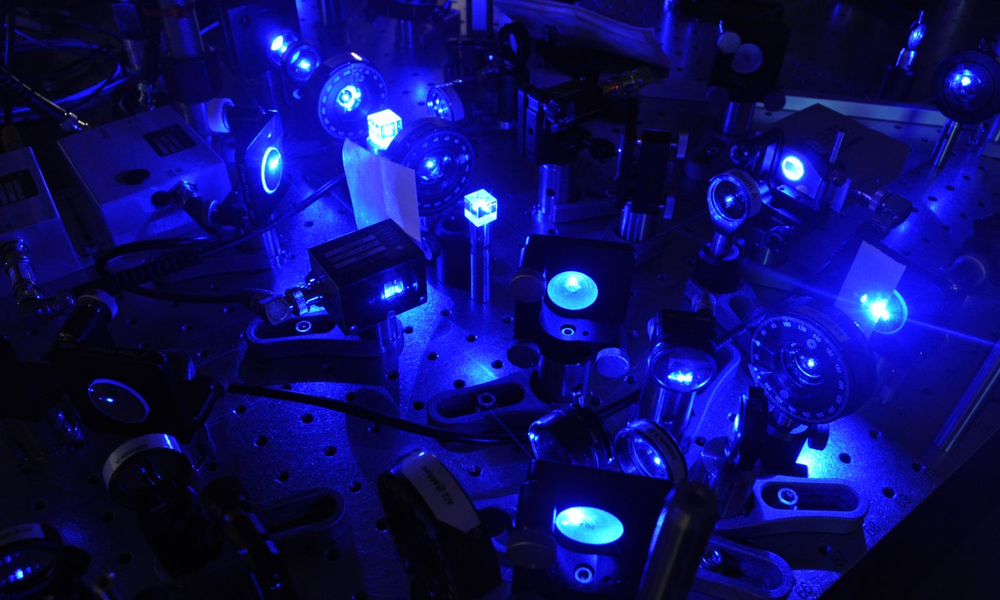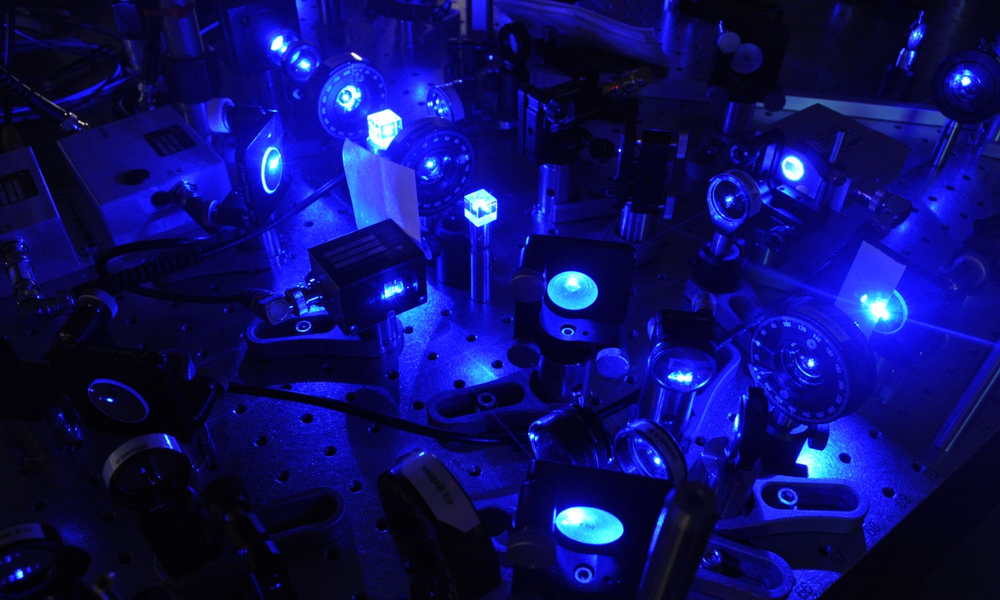New Accuracy Record for Molecular Lattice Clock
Molecules can rotate, vibrate, and twist. With each of those degrees of freedom comes a ladder of quantized energy levels whose spacings typically occupy the terahertz band. Because the ladder’s steps are tiny, molecules are exquisitely sensitive probes of internal and external fields. But the sensitivity complicates the two principal operations needed to build a working probe: cooling and trapping. In 2019 Tanya Zelevinsky of Columbia University and her collaborators overcame those hurdles to measure a vibrational transition in diatomic strontium to one part in 1012. Now, after four years of improvements to the experiment, the team has attained an accuracy 100 times greater [1].
Zelevinsky and her team chose Sr2 for their molecular clock because its constituent atoms can be readily cooled by diode lasers. The element’s most abundant isotope, 88Sr, also lacks spin, which, if it were present, would complicate both experimental handling and theoretical treatment.
To make the molecules, the researchers first cooled Sr atoms in a magneto-optical trap. Illuminating the atoms with a laser pushed pairs of atoms out of their unbound state and into an excited molecular state that promptly decayed by spontaneous emission.
The clock transition that Zelevinsky and her team measured is between the ground state’s lowest vibrational level, 𝜈=0 , and its highest bound vibrational level, 𝜈=62 . The rotational state is zero in both cases. Because the transition is forbidden, the team effected the transition in two steps by using a laser to excite the molecules from the 𝜈=0 state into a virtual state that decayed into the 𝜈=62 state.
The central challenge in accurately measuring a molecular transition is to minimize the broadening of the transition linewidth due to the molecules’ random motion (Doppler broadening). Trapping the molecules in the troughs of a standing wave of near infrared laser light—an optical lattice—holds the molecules still. However, the laser’s own electric field shifts the energies of the transition’s start and end states, a behavior known as the Stark effect. The shifts can be mitigated by tuning the frequency of the trapping laser so that the start and end states share the same polarizability. At that so-called magic frequency, the Stark effect disappears.
In the case of the 𝜈=0 and 𝜈=62 states, the desired cancellation would be accompanied by unwelcome scattering. To avoid that detriment, Zelevinsky and her team set the trapping laser’s frequency close to a resonance between one of the two states and a higher electronic state. That workaround preserved the cancellation at the expense of creating an escape route for molecules undergoing the 𝜈=0→62 transition. Still, enough of the molecules remained shuttling between the two levels that the transition’s frequency could be measured to an accuracy of 5 parts in 1014.
The team also compiled an uncertainty budget through adjusting various experimental settings. This budget quantified and ranked 11 sources of systematic error, with the Stark effect coming out on top. One route to minimizing this error source is to figure out how to reduce the intensity of the trapping laser, and therefore the size of the Stark effect, without freeing the molecules, Zelevinsky says.
By serving as a frequency standard, a strontium molecular clock could enable new applications in terahertz-frequency metrology. Zelevinsky says that she is also interested in using strontium clocks to search for a hypothetical gravity-like interaction that depends on particle mass. The telltale evidence could show up as differences in the terahertz spectra of the three molecular isotopologues of strontium: 84Sr, 86Sr, and the 88Sr used in this study. David DeMille of the University of Chicago anticipates that a strontium molecular clock could also determine whether the proton–electron mass ratio depends on time or gravity. “Such a signal could provide evidence for certain hypothesized types of dark matter and/or new scalar fields associated with particles of very low mass,” he says.
–Charles Day
Charles Day is a Senior Editor for Physics Magazine.
References
- K. H. Leung et al., “Terahertz vibrational molecular clock with systematic uncertainty at the 10−14 level,” Phys. Rev. X 13, 011047 (2023).





